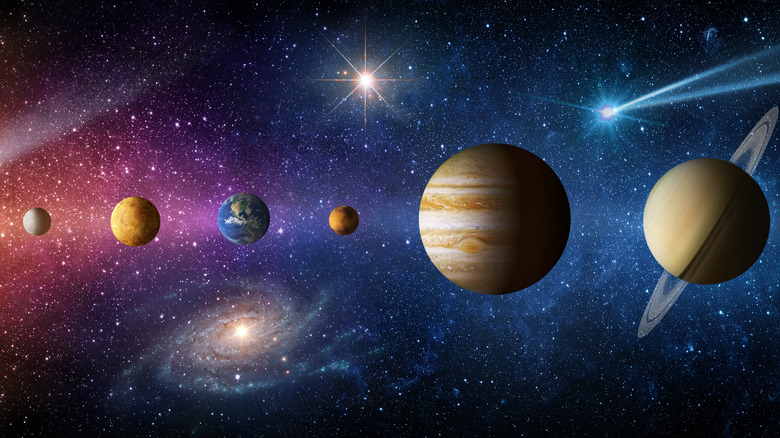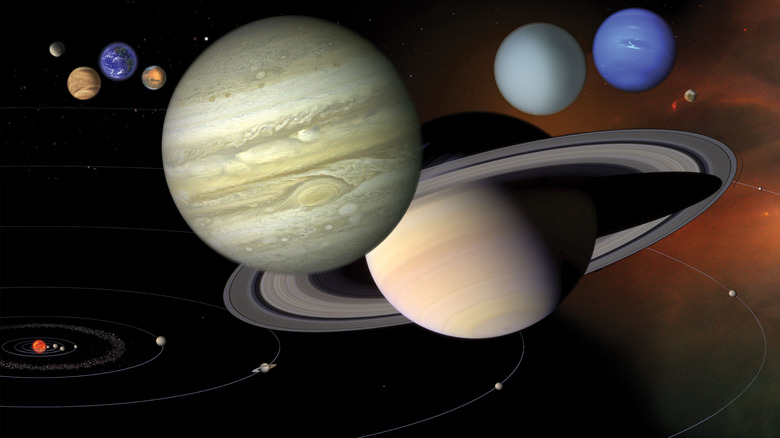Here's What Would Actually Happen If All The Planets Aligned
As the clock struck midnight on January 1, 2000 ... absolutely nothing happened. The uproar over the anticipated Y2K bug was just one of many failed doomsday predictions throughout history. But before that scare faded away, the world's residents got worked up by yet another end of days scenario. This one didn't center around the world's computers crashing to send us back to the dark ages, but planets lining up to cause earthquakes, floods, and possibly rending the Earth asunder. On May 5, 2000, Mercury, Venus, Mars, Jupiter, and Saturn (even the Moon got in on it) came within 25 degrees of each other in the sky. Also, the "great conjunction" of Jupiter and Saturn took place at the end of the month, an event that happens about every 20 years (via NASA). Again... nothing cataclysmic happened.
In February 1962, Mercury, Venus, Mars, Jupiter, and Saturn aligned within a 17-degree area. What made this special was a total eclipse of the Sun — for added apocalyptic measure. The band got back together and made another appearance in January 2016 and once again (minus Mercury) in April 2022. All five got back on the celestial stage yet again in June 2022. Nothing happened during any of those alignments either. FYI: a five-planet encore won't occur again for another eighteen years in 2040. But what if all eight of the planets in our solar system aligned? Remember, Pluto, is no longer considered a "planet." But is that even possible?
When talking about the term "planetary alignment," a few distinctions must be made, and the question has to be defined more precisely.
An exact planetary line dance is nearly impossible
First, an alignment depends entirely on your point of view in relation to those planets. Three or four planets might be aligned if you're looking at them from Earth, but if you hop over to one of the other planets in the solar system, they won't be. Secondly, the term doesn't literally mean they're lined up along the same heading, just that they're all lumped together in the same area. Since planets all have different orbits within the three dimensions of space, it may happen to a few, but it can rarely happen to all of them.
Jean Meeus, author of the book "Mathematical Astronomy Morsels," is a Belgian astronomer specializing in celestial mechanics and mathematical astronomy. He did the math based on the planet's heliocentric longitude and defined them as being lined up the same if they were within 1.8 degrees of each other. His math was eye-opening.
The three inner planets (Mercury, Venus, and Earth) would only "line up" once every 39.6 years. Adding Mars, Jupiter, Saturn, Uranus, and Neptune to the mix lowers the occurrence rate to a mind-boggling once every 396 billion years (via Sky & Telescope). On May 6, 2492, all eight planets will be as aligned as possible. Still, they won't be anywhere close to being in a straight line.
Even if all the planets lined up "exactly," NASA says nothing significant would happen. What about ocean tides? They would raise an imperceptible "one twenty-fifth of one millimeter." So, it's safe to say your beachfront property will be just fine.

